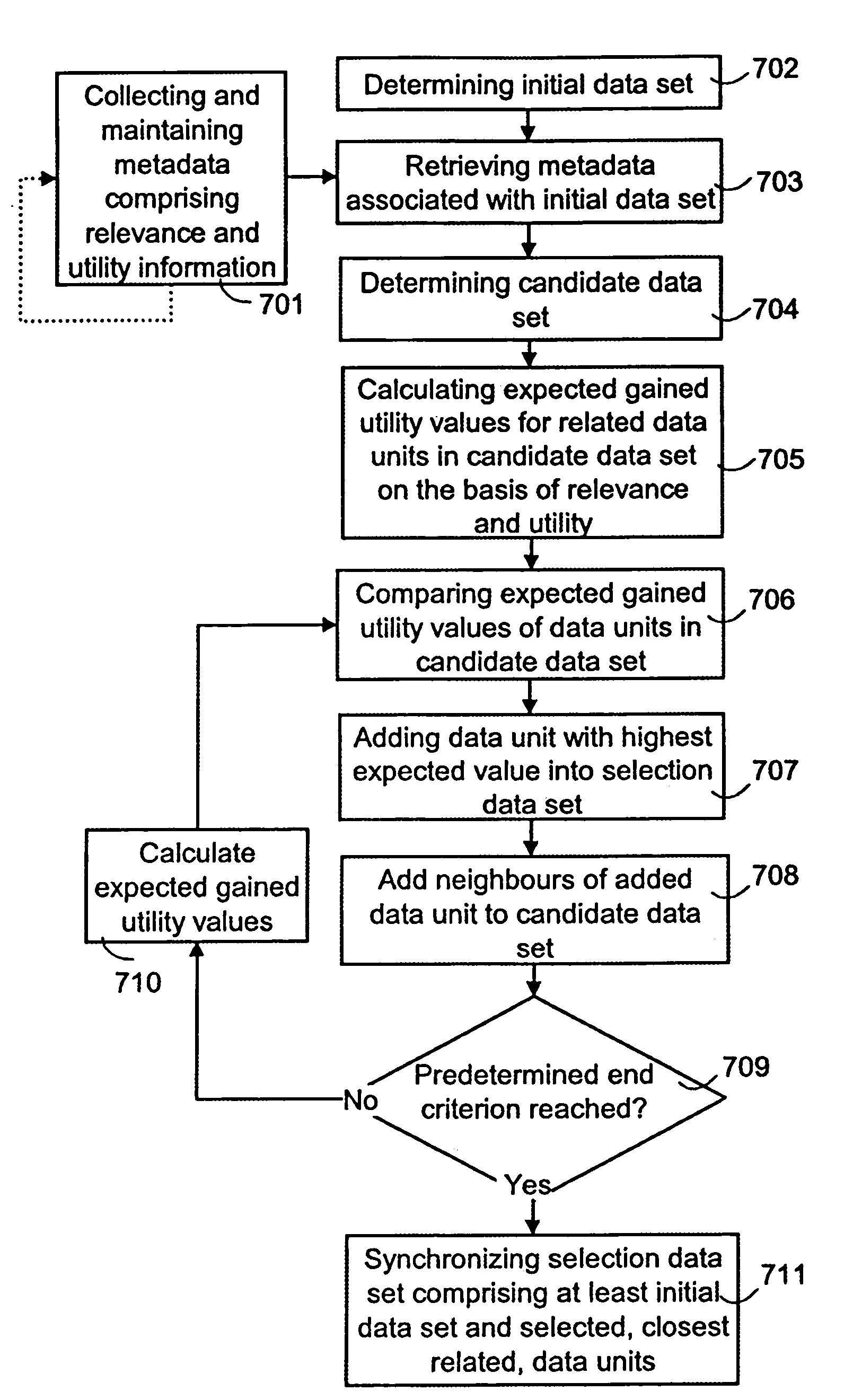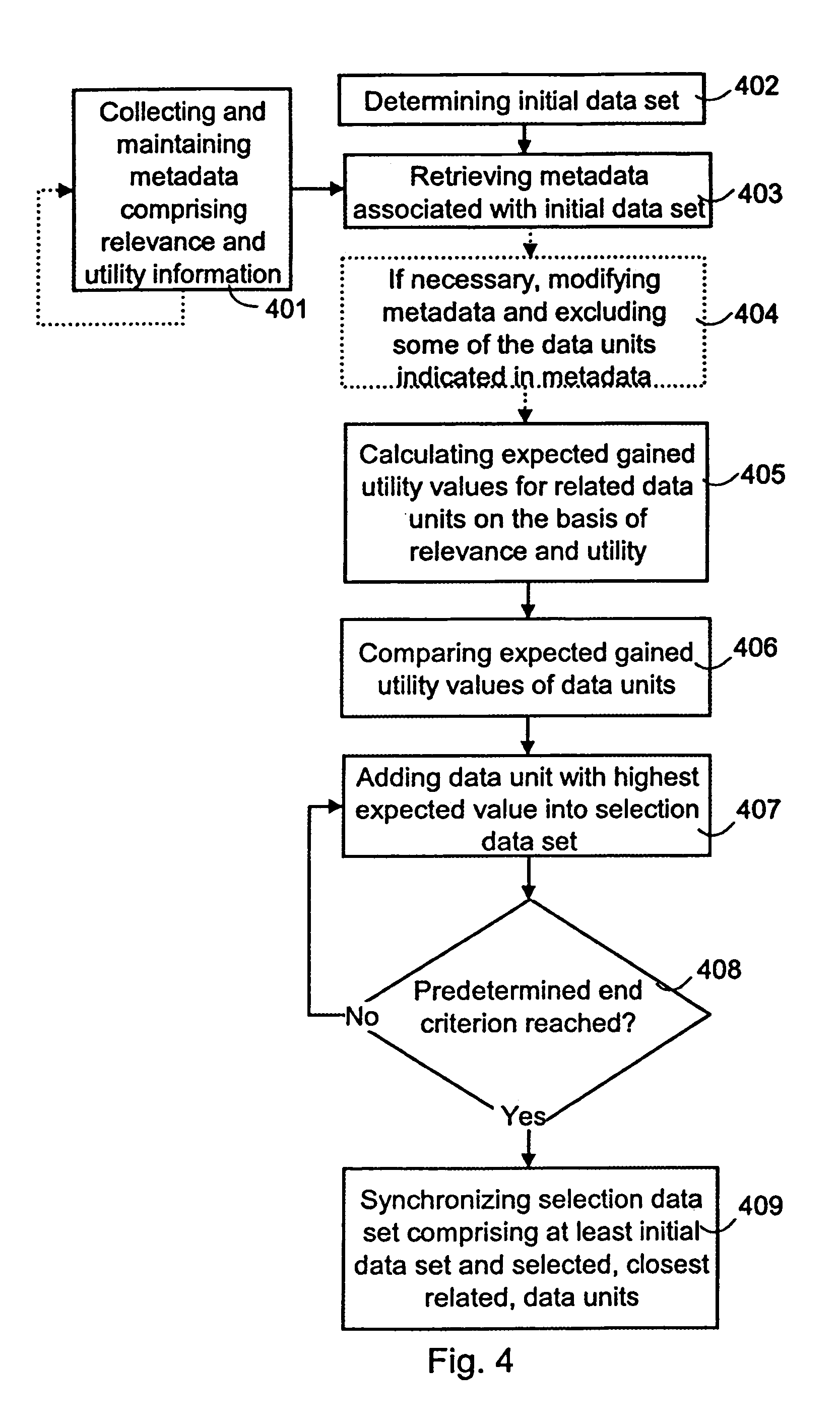Selecting data for synchronization
a data and synchronization technology, applied in the field of synchronization data, can solve the problems of insufficient storage capacity of portable devices, inability to store all the data needed by users, and further restrictions caused by available bandwidth, so as to improve usability, reduce the amount of terminal resources, and reduce the effect of limited bandwidth available in wireless data transmission
- Summary
- Abstract
- Description
- Claims
- Application Information
AI Technical Summary
Benefits of technology
Problems solved by technology
Method used
Image
Examples
Embodiment Construction
[0019]FIG. 1 illustrates a networked data system, in which data comprised in separate databases DB and terminals TE can be synchronized. From the point of view of synchronization, the terminal TE is a Client Device, and it is typically a portable computer, PDA device, mobile station or pager, and a synchronization server S is a server, typically serving a plurality of client devices. However, the synchronization server is not restricted to any particular equipment type; unlike in the example described, a wireless terminal can also function as a synchronization server. FIG. 1 shows two examples, the first one of which comprises terminals TE, databases DB and synchronization servers S connected to a Local Area Network LAN. A terminal TE connected to the network LAN comprises a functionality, such as a network card and software controlling data transmission, for communicating with the devices in the network LAN. The local area network LAN may be a local area network of any type, and th...
PUM
 Login to View More
Login to View More Abstract
Description
Claims
Application Information
 Login to View More
Login to View More - R&D
- Intellectual Property
- Life Sciences
- Materials
- Tech Scout
- Unparalleled Data Quality
- Higher Quality Content
- 60% Fewer Hallucinations
Browse by: Latest US Patents, China's latest patents, Technical Efficacy Thesaurus, Application Domain, Technology Topic, Popular Technical Reports.
© 2025 PatSnap. All rights reserved.Legal|Privacy policy|Modern Slavery Act Transparency Statement|Sitemap|About US| Contact US: help@patsnap.com



